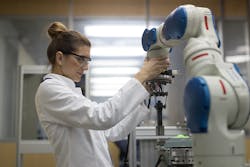Businesses across the European Union involved in processing have the opportunity to seek funding for research and innovation. The Horizon 2020 (H2020) program is designed to drive innovation to meet market demand and enable businesses from different countries and different industries to pool talent, skills and resources in dedicated consortia to open up opportunities, work faster and build economic growth.
Examples of innovation in the processing industry include driving improvements in efficiency, green technology, waste reduction and energy consumption.
What is Horizon 2020?
H2020 is the EU’s largest research and innovation program to date, with almost €80 billion available to European businesses between 2014 and 2020. Its ultimate aim is to ensure Europe’s global competitiveness against markets such as the U.S. and China.
The program helps to keep innovation alive in the EU, provides a broad spectrum of good jobs often in crucial STEM (science, technology, engineering and math) areas, keeps intellectual property in the EU, and helps businesses, industries and European markets stay ahead of global competition in research and development.
How does it work?
Rather than one company putting all its resources into research and development, H2020 helps companies pool their skills and resources together.
It all starts when a company realizes there’s a particular need in a market or identifies a gap. This company will have a certain expertise to be able to fill this gap, but lacks expertise in other areas. For example, they may have the technical knowledge to develop a new product, but don’t have the manufacturing skills to be able to make it. Applying for H2020 funding can help to bring the companies that do have this extra expertise together into a consortium.
During a rigorous application process, the applicant — either the company that has identified a new innovation or a ‘broker’ — details the project, the partner companies it has chosen to be part of the consortium, its objectives, rationale and costs. This is assessed and approved by the EU.
If the EU approves the project, the funding is provided upfront. It must all be accounted for in an independent audit at the end of the project, when the EU assesses the project’s success. Hopefully, the outcome will be a success with the launch of a new product or service, but as the funding does not need to be returned even if the project doesn’t work, the risk of failure is removed and the scope of innovation does not need to be restricted.
If the project is taken to market, the consortium moves into the commercialization and industrialization phases, including marketing and manufacturing scale-up. The consortium could form a new business venture together or it could continue as the original consortium but charge for their services rather than receiving EU funding to cover their costs.
The benefits of an EU consortium
There are many benefits to the processing industry of an EU consortium:
- Costs are covered
- Resources are pooled
- Sharing intelligence, skills, and capabilities
- Driving efficiency
- Quicker innovation
- Building relationships across industries and markets
However, being part of an EU consortium goes hand-in-hand with a certain level of bureaucracy and administration, such as meticulously tracking expenses and time. The benefits, however, can greatly outweigh the red tape.
An example of a successful EU consortium
The SoftSlide project is led by a consortium of seven European partners whose expertise completes the industrial supply chain required for the mass commercialization of ground-breaking sealing technology. The consortium is made up of a university, two manufacturing companies including a chemical manufacturing company that provided process manufacturing expertise, a technical expert, a laser engraving expert and two analytical testing companies.
Softslide’s objectives are to generate €60million in revenue and create 350 new jobs through the commercialization of this new sealing technology.
The result of the consortium is a mass production process that transfers micro-patterns during the molding stage to obtain low-friction, high-performing dynamic seals for hydraulic and pneumatic machinery. These seals can be used in a wide range of industries from automotive and aerospace to farming, mining and waste treatment, and this innovative new process can be easily adopted by dynamic seal manufacturers with an insignificant cost increase.
SoftSlide technology will provide the sealing industry with around €3,315million per year in energy savings for hydraulic and pneumatic end-users.
Jessica Clifton is an experienced technical copywriter with more than 17 years’ experience. She covers ReAgent Chemicals business news and creates related chemical and chemistry content on Chemicals.co.uk.


